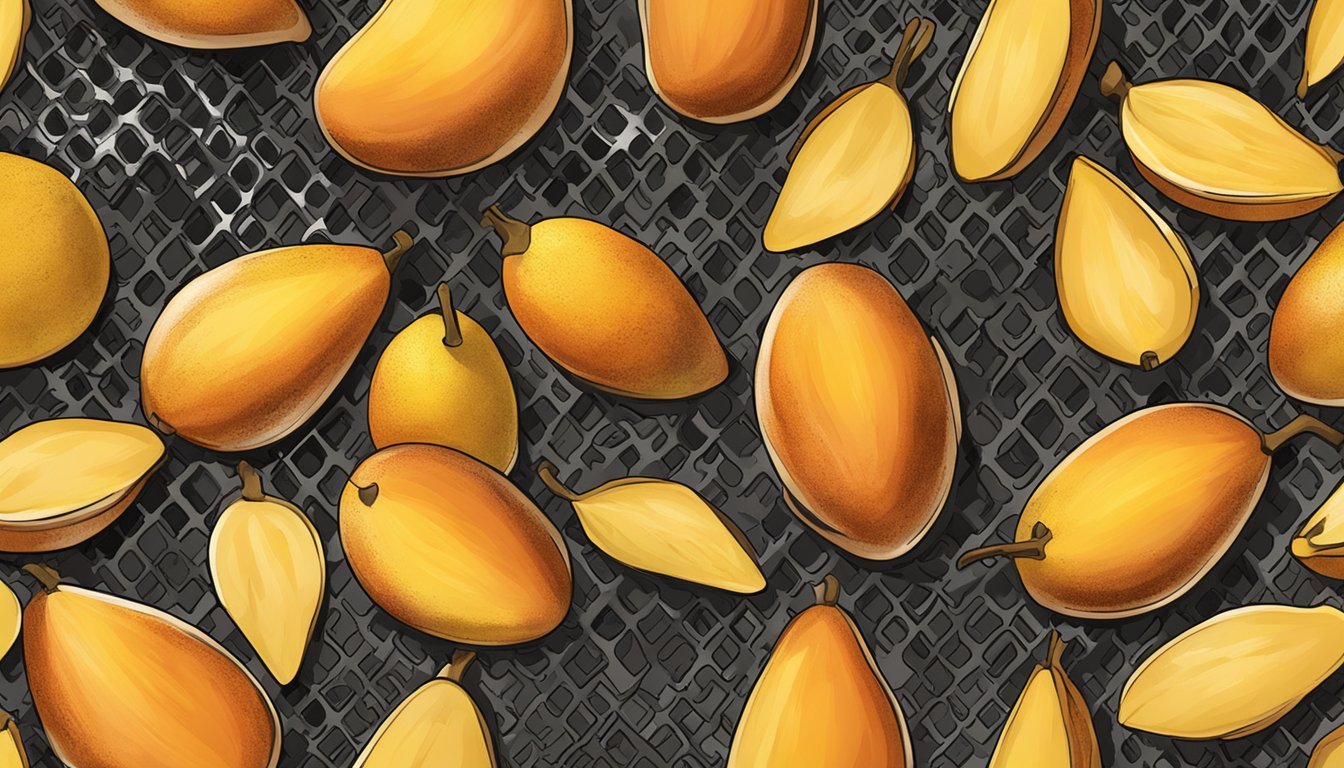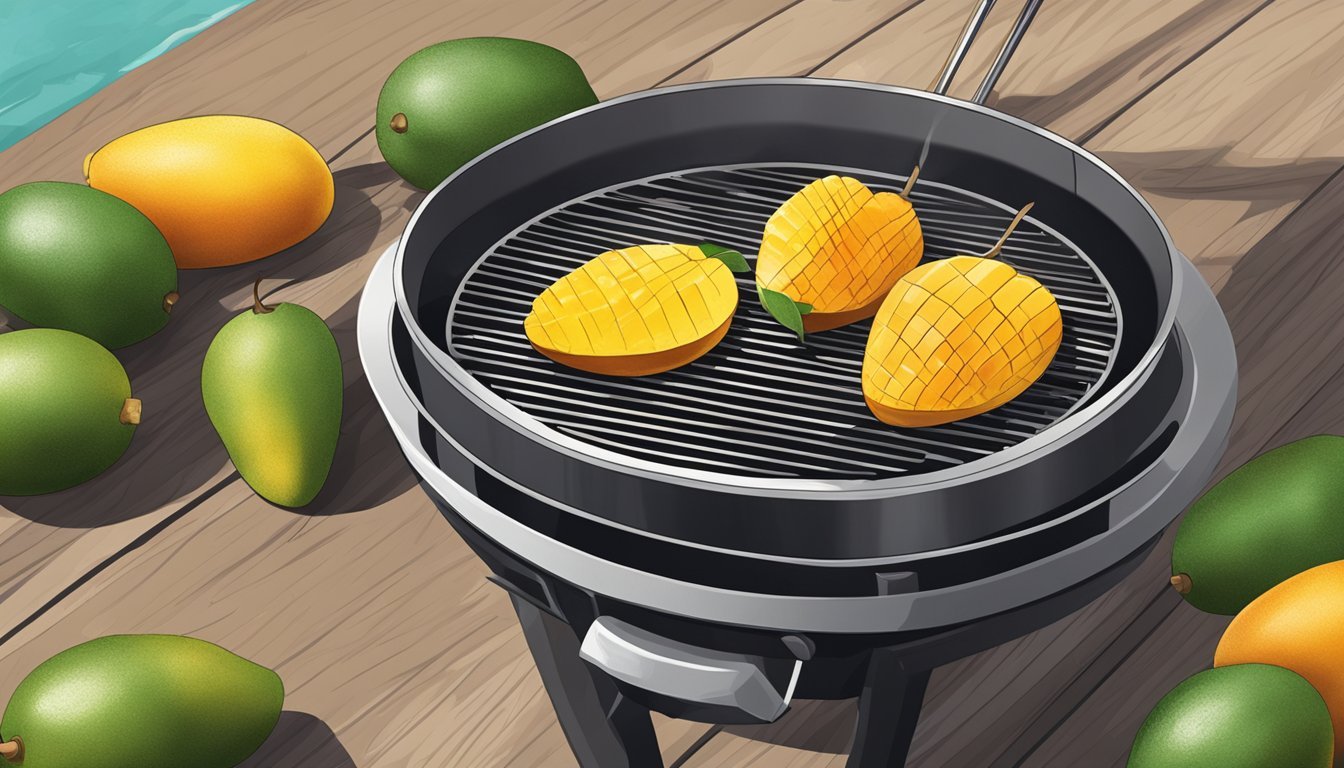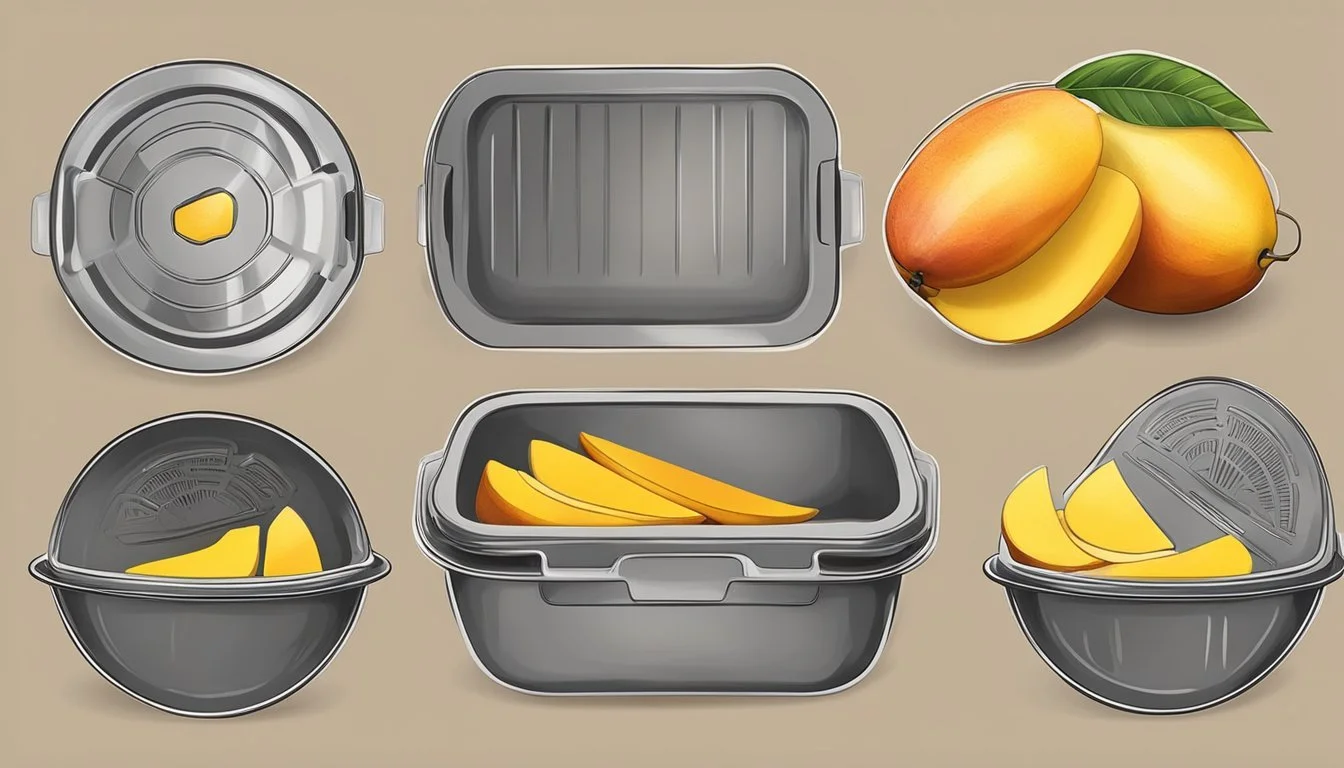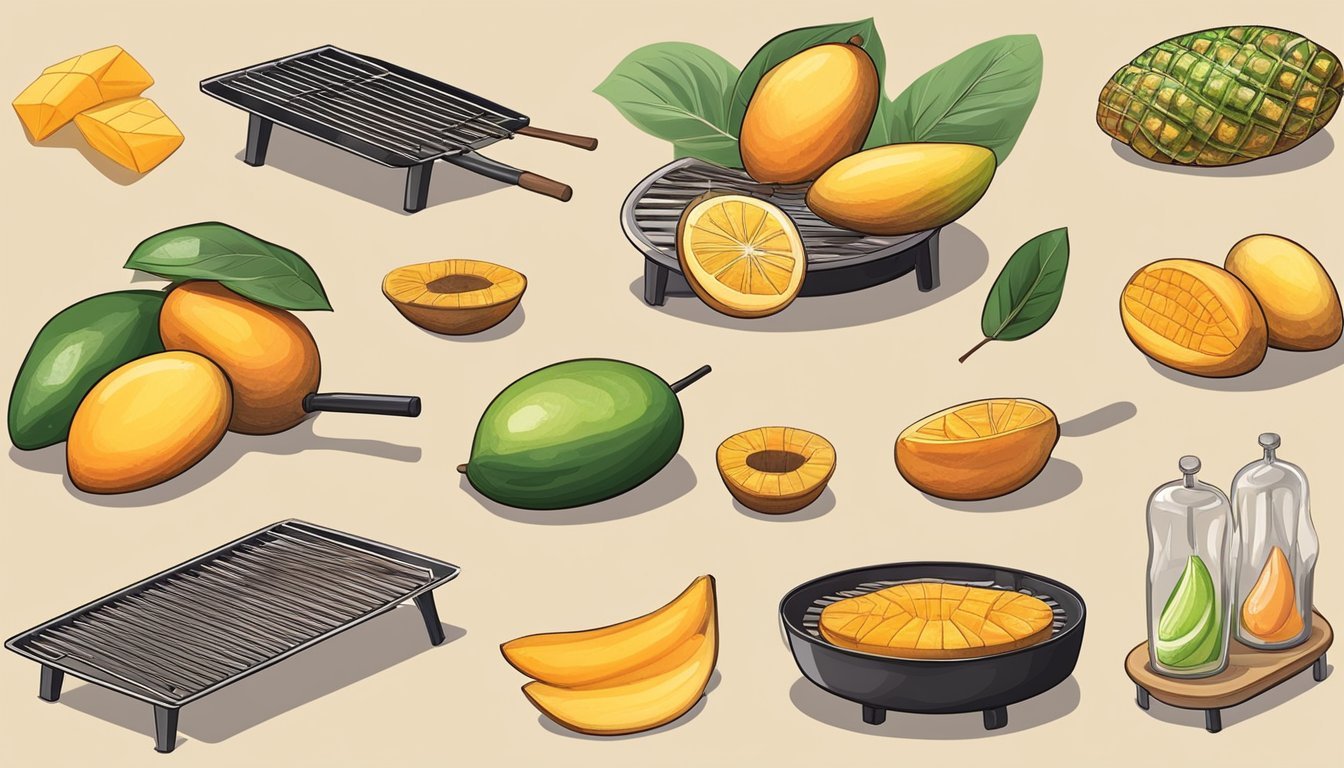How Long Does Gluten-Free Grilled Mango Last?
Storage Tips and Shelf Life
Grilled mango is a delightful, gluten-free treat that adds a burst of sweetness and smokiness to various dishes. This tropical fruit, when grilled, can enhance everything from salads to salsas. Many wonder about the shelf-life of this delectable addition, especially when adhering to a gluten-free diet.
Grilled mango, when stored properly in an airtight container in the refrigerator, can last for up to three days. Ensuring that the mango is kept at a consistent, cool temperature helps maintain its freshness and flavor. This makes it an excellent option for meal prepping or adding a quick, flavorful component to multiple meals throughout the week.
For those seeking to extend the life of their grilled mango, freezing is an option. Grilled mango can be frozen for up to three months without significant loss of texture or taste. Just be sure to thaw it properly before use to retain its delightful qualities.
Understanding Gluten-Free Foods
Gluten-free foods are critical for individuals with celiac disease or gluten sensitivity. This section will define what "gluten-free" means and its significance for health.
Defining Gluten-Free
Gluten-free refers to products that do not contain gluten, a protein found in wheat, barley, and rye. For individuals with celiac disease, consuming gluten can trigger a harmful immune response.
It's essential to differentiate between naturally gluten-free foods and those labeled gluten-free after processing. Naturally gluten-free foods include fruits, vegetables, meat, fish, dairy, and legumes. These foods are safe for people with gluten allergies or sensitivities.
Processed foods marketed as gluten-free should meet the FDA’s standard of containing less than 20 parts per million (ppm) of gluten. This standard ensures that foods are safe for consumption even by those with heightened sensitivity to gluten.
Understanding these distinctions helps maintain a safe diet and avoid gluten cross-contact.
Health Benefits of Mango
Mangoes provide a variety of health benefits, largely due to their rich nutritional profile and high vitamin and mineral content. They support overall health through their antioxidant properties, immune-boosting nutrients, and essential vitamins and minerals.
Nutritional Profile of Mango
A typical serving of mango, which is about one cup of chopped mango (165 grams), offers around 99 calories. This makes it a low-calorie fruit suitable for most diets. It also provides 2.6 grams of fiber, which aids in digestion and helps maintain a healthy gut.
Mangoes are rich in antioxidants such as mangiferin and quercetin. These compounds help protect the body from oxidative stress and inflammation. Additionally, mangoes contain small amounts of iron and calcium, contributing to overall nutritional intake.
Vitamins and Minerals in Mango
Mangoes are packed with essential vitamins and minerals. One cup of mango provides 67% of the daily recommended value of vitamin C, which supports immune function and skin health. They also offer 20% of the daily value for copper, a mineral important for red blood cell production.
Vitamin A is another key nutrient found in mangoes. One cup supplies 10% of the daily requirement, supporting vision and immune health. Additionally, mangoes provide other beneficial nutrients like vitamins E and K, and traces of iron.
Including ripe mango in your diet can contribute to meeting various nutritional needs, offering a delicious way to support overall health.
Selecting Ingredients for Mango Dishes
For creating delicious mango dishes, it is essential to select the right type of mango and complementary ingredients. Each component can significantly impact the flavor and texture of the final dish.
Choosing the Right Mango
Selecting the perfect mango is crucial. Ripe mangoes are ideal as they offer a fine balance between sweetness and texture. Honey mangoes, also known as Ataulfo mangoes, are popular due to their smooth and creamy texture. Sweet mango varieties such as Haden or Kent can add a burst of flavor. When choosing mangoes, look for ones that give slightly to pressure and emit a fruity aroma. Avoid overripe mangoes with dark spots.
Key Tips:
Ripe Mangoes: Slightly soft to touch
Honey Mangoes: Creamy texture
Sweet Mango Varieties: Haden, Kent
Avoid: Overripe with dark spots
Complementary Ingredients
Pairing mango with the right ingredients can elevate your dish. Lime juice adds a zesty freshness that balances the sweetness of mango. Fresh cilantro provides a hint of herbaceous flavor. For a touch of sweetness, consider using honey. These ingredients greatly enhance the natural flavors of mango.
Popular Pairings:
Lime Juice: Balances sweetness
Cilantro: Adds herbaceous notes
Honey: Enhances sweetness
Use fresh, high-quality ingredients to ensure a delightful and flavorful mango dish.
The Grilling Process
Grilling mango involves a few key steps to ensure perfect caramelization and a balanced smoky flavor. This process includes proper preparation and specific grilling techniques.
Preparing Mango for Grilling
Start by selecting ripe mangoes that are firm yet slightly soft to the touch. Peel the mangoes and slice them into thick pieces, about half an inch thick, to prevent them from falling apart on the grill. Brushing the mango slices with olive oil helps prevent sticking while enhancing the flavor.
Ensure the grill is preheated to medium-high heat. Oil the grates using a brush to create a non-stick surface. This step is essential to achieve those desirable grill marks and prevent the fruit from tearing.
Grilling Techniques for Mango
Place the prepared mango slices directly on the grill grates, ensuring there is space between each slice to promote even cooking. Grill the mango pieces for approximately 2-3 minutes on each side. This short duration allows the natural sugars to caramelize without overcooking the fruit.
Flip the mango slices gently with a spatula once grill marks appear. The goal is to achieve a slight char while maintaining the mango's juiciness and texture. Adjust the heat if necessary, to avoid burning.
By using these precise techniques, the grilled mango will have a smoky and sweet flavor perfect for various dishes.
Preservation of Grilled Mango
Proper preservation ensures that grilled mango remains fresh, flavorful, and safe to eat for as long as possible. The following details the optimal storage conditions and important considerations for food safety and shelf life.
Optimal Storage Conditions
Grilled mango should be stored in a refrigerator to maintain its freshness. It must be placed in an airtight container to prevent moisture loss and minimize exposure to air, which can cause spoilage.
It's best to store the mango at a consistent temperature below 40°F (4°C). This slows down bacterial growth and keeps the mango tasting sweet and savory.
To further preserve the grilled mango, ensure that any residual heat has dissipated before storing. Warm temperatures can cause condensation inside the container, which can lead to spoilage.
Shelf Life and Food Safety
Grilled mango typically lasts for about 3-5 days when stored correctly. Monitoring the condition of the mango is crucial for safety. If the mango shows signs of mold or has an off odor, it should be discarded immediately.
Using a clean utensil each time you handle the mango can also help prevent contamination. Avoid leaving grilled mango out at room temperature for extended periods to reduce the risk of bacterial growth.
Labeling the container with the date of storage can help keep track of freshness. This practice ensures that the grilled mango is consumed within the safe timeframe, maintaining both its flavor and safety.
Incorporating Grilled Mango into Meals
Grilled mango is a versatile ingredient that can elevate both savory and sweet dishes, offering a unique blend of smoky and sweet flavors. It pairs well with grilled proteins, adds zest to salads, and can even be used in salsas and desserts.
Serving Suggestions
Grilled mango can enhance many dishes, whether as a main ingredient or a delightful side. For tacos, consider using grilled mango tacos filled with shrimp or chicken, topped with fresh salsa. In salads, combine grilled mango with mixed greens, goat cheese, and sliced almonds for a refreshing bite.
Pair grilled mango with proteins such as grilled chicken or salmon. Its sweetness complements the savory taste, making your main dish truly special. For a quick snack, serve grilled mango slices with Greek yogurt or as an appetizer alongside crispy tortilla chips.
Recipe Inspirations
Explore various recipes that incorporate grilled mango. Mango salsa is a classic choice; mix grilled mango with diced tomatoes, onions, and cilantro for a zesty topping on tacos or grilled fish. For a tropical twist, serve grilled teriyaki mango skewers with your favorite meat or tofu.
For a fusion dish, try blending grilled mango in mango recipes like smoothies or desserts. Another idea is grilling mango with a drizzle of honey and a sprinkle of cinnamon, then serving it over ice cream for a simple yet impressive dessert.
Incorporating grilled mango into meals doesn't have to be complicated. Its rich flavor and versatility make it an excellent addition to various dishes, from main courses to snacks and appetizers.
Culinary Variations and Pairings
Grilled mango offers a versatile base for a range of delightful culinary combinations. With various creative twists and complementary flavors, it can enhance both sweet and savory dishes.
Creative Twists on Traditional Mango Dishes
Grilled mango can be transformed into many innovative dishes. Grilled Mango Chicken includes marinating chicken with mango, soy sauce, garlic, and ginger. This combines sweet and savory flavors, perfect for grilling to achieve a smoky taste.
For a more tropical twist, Grilled Mango Salsa with pineapple, red bell pepper, and jalapeño adds a bold, spicy kick. Combining these ingredients with grilled mango creates a vibrant and refreshing side dish.
Enhancing desserts, Grilled Mango Tacos made with corn tortillas and grilled mango slices offer a sweet and savory contrast, often paired with a scoop of vanilla ice cream or a dollop of whipped cream.
Complementary Flavors for Mango
Mango pairs well with various ingredients to create balanced dishes. When grilling mango, pairing it with avocado and red onion in a salad can add a creamy and tangy dimension.
For those who enjoy spicy flavors, jalapeño and grilled mango work wonderfully together in salsas. This combination delivers a balanced heat that complements mango’s natural sweetness.
Moreover, incorporating red bell pepper and corn tortilla enhances the overall texture and taste. The bell pepper’s crunch and corn tortilla’s soft texture create a harmonious blend with the grilled mango.
Using these complementary ingredients ensures that grilled mango dishes remain versatile, suitable for different tastes and occasions, especially during summer.
Dietary Considerations
When incorporating gluten-free grilled mango into a diet, it's essential to be aware of the nutritional benefits and health-conscious alternatives available.
Health-Conscious Alternatives
Grilled mango is naturally gluten-free, making it suitable for individuals with celiac disease or gluten sensitivity. It is also vegan and paleo-friendly, fitting well within various dietary protocols.
For those monitoring their fat and calories, mango offers a low-calorie option with negligible fat content. A standard serving of mango provides a modest amount of protein, making it a vibrant addition to summer meals without excess calories.
Grilling mangoes enhances their natural sweetness without adding unhealthy ingredients. This preparation method supports a balanced, nutrient-rich diet, providing essential vitamins and minerals, such as vitamin C and A, while maintaining dietary restrictions.
Beyond the Basics
Delving into more sophisticated techniques for grilling mangoes and presenting them can elevate your dishes significantly. Learn how to achieve optimal flavor and stunning visual appeal with your perfectly grilled mangoes.
Advanced Cooking Techniques
Grilling mangoes to perfection requires attention to detail. Brush mango slices with olive oil to prevent sticking and enhance their natural flavors. Grill mangoes flesh side down over medium heat. Keep them on the grill for 1-2 minutes until they achieve a beautiful char and slight caramelization.
For an extra layer of flavor, marinate mangoes in a mixture of lime juice, cilantro leaves, and chili flakes before grilling. This step infuses the fruit with tangy and spicy notes. Utilizing tinfoil as a barrier can help avoid cross-contact with gluten, ensuring safety for those with celiac disease.
Presentation and Garnishing Tips
Vivid presentation can make grilled mangoes more inviting. Arrange them on a platter in a fan shape to showcase their vibrant color. Garnish with freshly grated lime zest and finely chopped cilantro leaves for a pop of green and added freshness.
Incorporate different textures to balance the dish. Sprinkle toasted sesame seeds on top, or add a dollop of creamy yogurt beside the grilled mangoes. Drizzle a bit of honey for sweetness, which contrasts beautifully with the charred mango flavors. These simple touches elevate the dish, making it visually appealing and delectable.
Engaging with Your Audience
Engaging with your audience is essential for building a dedicated following. Audience interaction can elevate your content, especially when discussing topics like gluten-free grilled mango.
Encourage readers to rate your content. Implement a star rating system on your blog. It provides instant feedback and helps you understand what topics resonate most with your audience.
Use social media platforms such as Instagram to share your gluten-free recipes. Post high-quality images of your grilled mango dishes, and use relevant hashtags to reach a broader audience.
Invite your followers to share their own creations. Create a branded hashtag and encourage users to post their versions of gluten-free grilled mango. This fosters a sense of community and increases engagement.
Host live cooking demonstrations. Use platforms that allow real-time interaction, like Instagram Live. This gives your audience a chance to ask questions and receive immediate responses.
Encourage comments and feedback on your posts. Respond to comments promptly to show that you value your readers' input. This can help build a loyal community around your content.
Example Interactions:
Platform Engagement Strategy Instagram Share pictures, host live sessions, use hashtags. Blog Use star ratings, encourage comments, ask for recipe variations.
Engaging effectively with your audience creates a more dynamic and interactive experience, building trust and interest in your gluten-free recipes.












